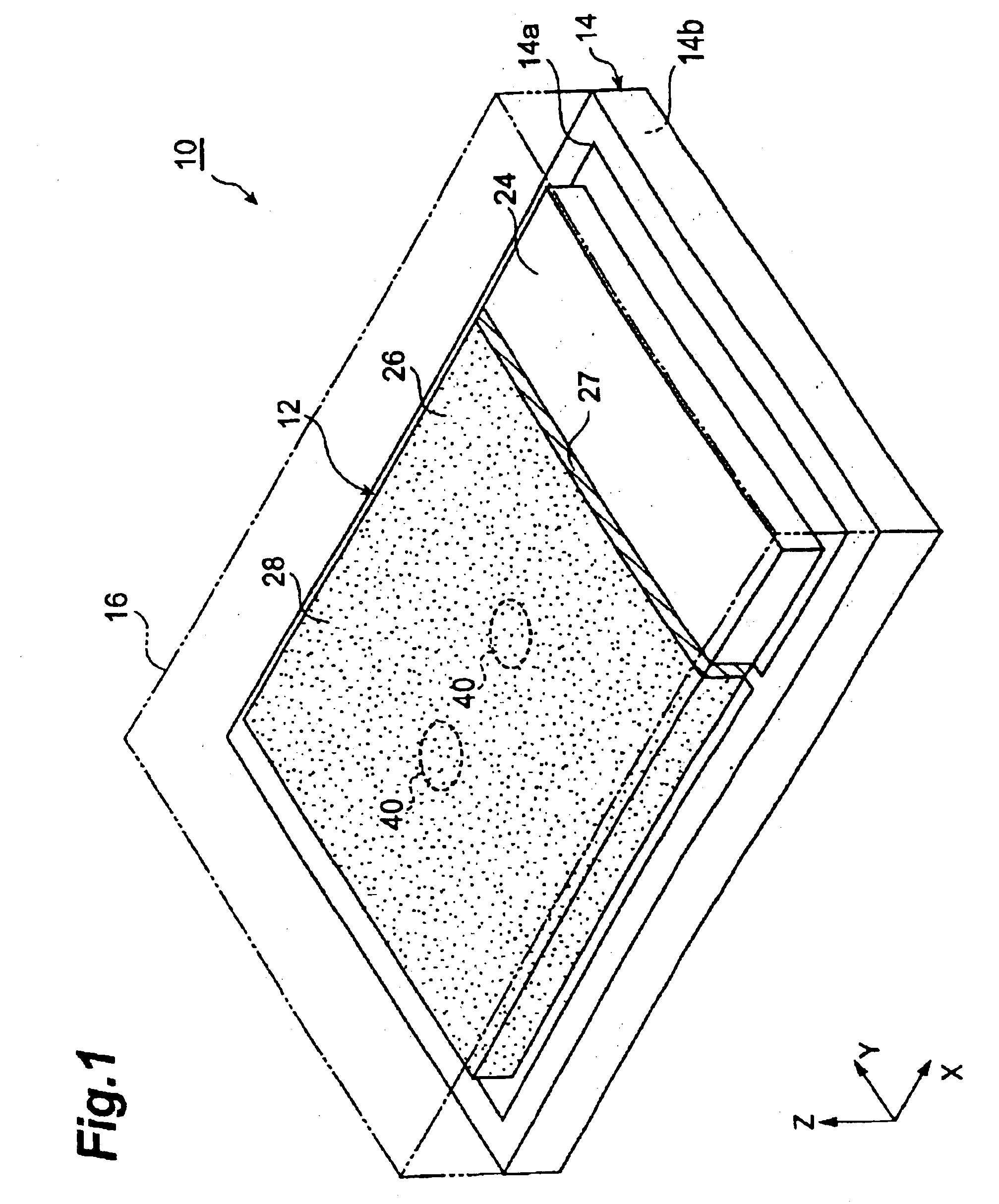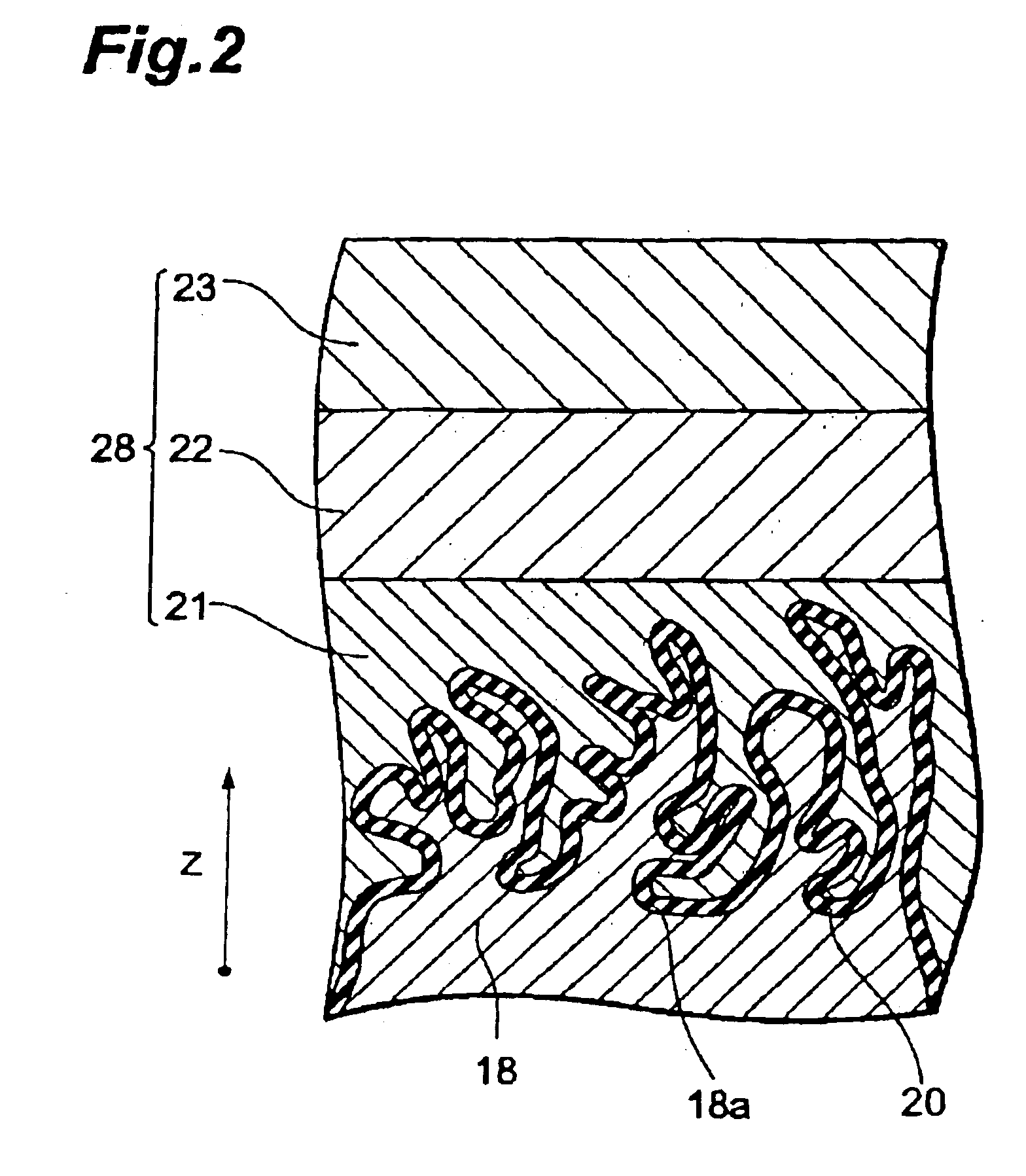Electrolytic capacitor
a technology of electrolytic capacitors and capacitors, applied in the direction of fixed capacitor details, casings/cabinets/drawers, electrical equipment casings/cabinets/drawers, etc., can solve the problem of insufficient lowering of impedance, and achieve the effect of reducing esl more effectively
- Summary
- Abstract
- Description
- Claims
- Application Information
AI Technical Summary
Benefits of technology
Problems solved by technology
Method used
Image
Examples
example 1
In the following manner, an electrolytic capacitor similar to the electrolytic capacitor 10 shown in FIG. 1 was produced.
First, from a roughened aluminum foil sheet, formed with an aluminum oxide film, having a thickness of 100 μm and yielding a capacitance of 270 μF / cm2, an aluminum anode electrode body was produced by punching so as to attain a form identical to that of the aluminum foil 30 shown in FIG. 3 with a size of 4.7 mm×3.5 mm (an area of 0.165 cm2) excluding the portion corresponding to the anode part. In thus punched electrode body, the roughened structure in the region (region corresponding to numeral 27 in FIG. 3) to be formed with an insulative resin layer was destroyed by pressing. In thus produced electrode body, only the surface of the pressed region (region corresponding to numeral 27 in FIG. 3) was coated with an epoxy resin.
Thus obtained electrode body was set in an aqueous ammonium adipate solution with a concentration of 3 wt % whose pH was adjusted to 6.0, su...
example 2
In the following manner, an electrolytic capacitor similar to the electrolytic capacitor shown in FIG. 7 was produced.
First, from a roughened aluminum foil sheet, formed with an aluminum oxide film, having a thickness of 100 μm and yielding a capacitance of 270 μF / cm2, an aluminum anode electrode body was produced by punching so as to attain a form identical to that of the aluminum foil 130 shown in FIG. 8 with a size of 6.5 mm×3.0 mm (an area of 0.195 cm2) excluding the four protruded parts (the parts referred to with numeral 124A). In thus punched electrode body, the roughened structure in the region (region corresponding to numeral 127 in FIG. 8) to be formed with an insulative resin layer was destroyed by pressing. In thus produced electrode body, only the surface of the pressed region (region corresponding to numeral 127 in FIG. 8) was coated with an epoxy resin.
Thereafter, only the protruded parts 124A on one side (two of the four anode parts) among the four protruded parts co...
PUM
 Login to View More
Login to View More Abstract
Description
Claims
Application Information
 Login to View More
Login to View More - R&D
- Intellectual Property
- Life Sciences
- Materials
- Tech Scout
- Unparalleled Data Quality
- Higher Quality Content
- 60% Fewer Hallucinations
Browse by: Latest US Patents, China's latest patents, Technical Efficacy Thesaurus, Application Domain, Technology Topic, Popular Technical Reports.
© 2025 PatSnap. All rights reserved.Legal|Privacy policy|Modern Slavery Act Transparency Statement|Sitemap|About US| Contact US: help@patsnap.com



